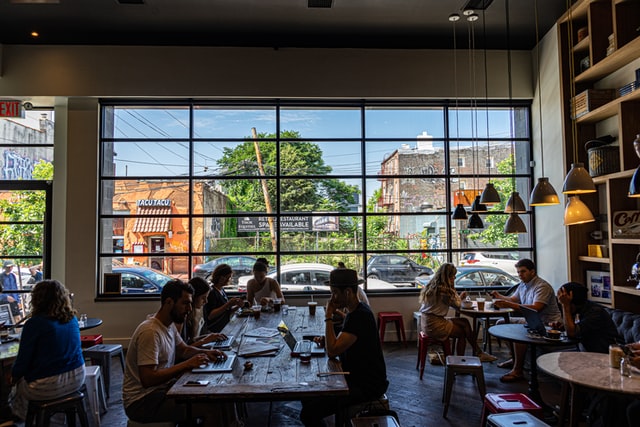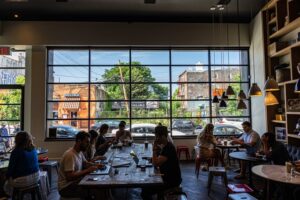In the cut-throat restaurant industry, it is seemingly quite tough to wow your customers and persuade them to arrive at your restaurant time and again. In simple words, looking forward to turning around the restaurant marketing sales and enhancing it is a pipe dream unless and until you have a down-to-earth Restaurant Marketing Plan.
Hirav Shah, the world-famous Astro Strategist, and Business Astrologer who mixes business principles with astrology to help entrepreneurs to maximize their full potential and achieve their desired results, recently talked about the 20 changes that have taken the restaurant industry by storm in the past few years.
1. The Increase in Online Orders: By 2023 the revenue of online food delivery is expected to be at least $11,952.7 million.
2. Experimenting with Dining Experiences: The industry continues to opt for out-of-the-box experiences for the guests. The days of two-for-one meals are becoming obsolete.
3. Sustainable Dining: This means that when eating out, diners bank on restaurants that aren’t serving tasty food only. Their choice is based on restaurants that are focused on sustainability. Sustainability in dining is all about proper food and restaurant management, such as using energy-efficient lighting and reduction of wastage.
4. Consumers spend calculatingly: Consumers have a fair idea of market prices. There should be transparency in terms of pricing. Customers can easily figure out true net costs and unbundled costs.
5. Wellness Warriors enter the industry: A survey among customers revealed a 149 percent increase in simmered foods (great for gut health) and a 99 percent increase in CBD (a wonder-additive that helps with everything from inflammation to anxiety) on menus leading to 2019 as the year of functional foods and drinks.
6. Cultivating Culture to fight employee turnover: From high profile restaurant empires to small town dining establishments, tolerance has waned drastically and expectations are higher than ever for workplace culture in restaurants. In the aftermath of #metoo movement in 2018, no one is going to accept “that’s how it is”. Everyone knows that fair treatment is their right.
7. Embracing Restaurant Technology: Gone are the days of billing machines in restaurants. There has been a significant rise of 54% in restaurant management technology.
8. Faster KOT: After ordering the food, it is taking less time to reach the table. As faster, KOT immediately communicates to the kitchen.
9. Error Free POS: A Point of sale system doesn’t give any room to any manual error. Every calculation is done without error.
10. Efficient Inventory Management: The efficiency of inventory management has enabled restaurants to track their stock properly.
11. Focus on environment friendly restaurants: Most restaurateurs are now looking for environment friendly ambiance. They do not want to contribute to pollution of any kind.
12. Dependence on CCTV for surveillance: Hardly you find any outlet without CCTV so that footage can reveal malpractices if any. Everyone knows that they are being monitored.
13. Rise in vegetarian, vegan and plant based dining: Many diners have embraced vegetarianism out of sheer love for animals and some have turned vegan due to their individual choices which vary from one individual to another.
14. Smaller Plating: Most diners have become extremely health conscious due to which they prefer to eat less. Restaurants have identified the trend and have cut down on quantities. Previously, two people were required to consume one plate of noodles. Now the same plate can be consumed by a single individual only.
15. Unique and Global Flavours: Most restaurants are experimenting with global cuisines which local populace isn’t aware of. The uniqueness of this experiment makes it acceptable to the diners.
16. Changing wine tastes: Food and Beverage personnels worldwide have started experimenting with drinks for long. As a result, the customers have developed a fascination for the new wine tastes.
17. Hyper Local restaurants: Hyperlocal marketing analysis has a big role to play in the industry. A lot of restaurants prefer to understand what the people prefer eating, as it helps them gain more footfalls while reducing wastage of remaining food items.
18. Fast Food to Fast casuals: A fast casual restaurant found in the US, does not provide complete table service, but advertises for better quality food than fast food restaurants, with fewer frozen or processed ingredients. It is a concept between fast food and casual dining.
19. More Food Industry Blogs for guidance: There has been a manifold increase in the number of bloggers. It includes restaurant bloggers as well as food bloggers who provide insights that guide diners accordingly
20. Active on Social Media: Digital Marketing has become an important tool and most restaurant traders want their establishments to be active on social media.
Business Astrologer Hirav Shah, who is working with World’s leading hotelier, Tourism and hospitality owners, Theme Park Owners, Restaurants owners, etc from USA, Europe, England, UAE, India, etc., for their existing and new projects to increase certainty and to make strategies, concludes by saying that restaurants that seek to stay ahead of the curve despite the cut-throat nature of the industry would do well to integrate business intelligence and data analytics into their strategy with a dash of astrology.























